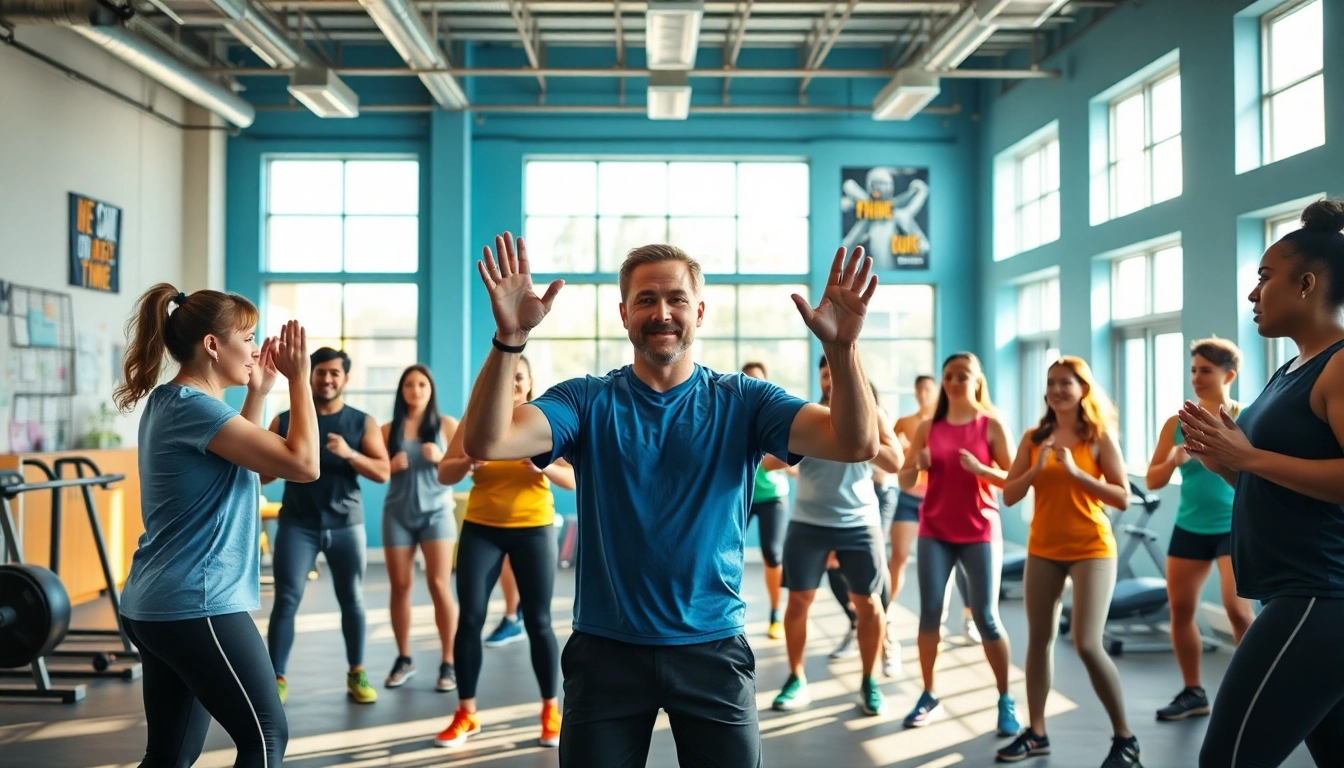Understanding the Impact of Gym Group Training
In recent years, group training has gained immense popularity among fitness enthusiasts and beginners alike. This approach not only boosts motivation but also fosters a sense of community, making workouts more enjoyable and effective. When we talk about gym group training, we’re not just looking at a collection of individuals exercising in a shared space; instead, we are observing a powerful amalgamation of support, accountability, and shared commitment to health and fitness.
Benefits of Participating in Group Training
Group training offers numerous benefits that extend beyond the mere act of exercising side by side with others. Here are some key advantages:
- Enhanced Motivation: Working out in a group creates a competitive atmosphere, encouraging participants to push their limits and challenge one another.
- Accountability: Group members often hold each other accountable, which can lead to higher attendance rates and consistency in workouts.
- Expert Guidance: Many group training sessions are led by certified instructors who can provide expert guidance, ensuring participants are exercising safely and effectively.
- Variety of Workouts: Group classes typically feature a range of workout styles, from high-intensity interval training (HIIT) to yoga, introducing variety and preventing workout boredom.
- Building Social Connections: Engaging with others helps foster friendships, which can be a vital aspect of maintaining a long-term fitness routine.
How Group Dynamics Enhance Motivation
The social dynamic involved in group training significantly enhances motivation. Research indicates that individuals are more likely to perform better when in the company of others due to increased competitive spirit and the psychological phenomenon known as the “social facilitation effect.” This effect occurs when individuals perform better in the presence of others. Within group training, this insight is capitalized on, leading participants to push beyond their perceived limits.
Moreover, group dynamics can create a supportive environment where shared successes are celebrated. This communal aspect not only boosts morale but can also reinforce an individual’s commitment to their fitness goals. As group members encourage each other, they build a culture of strength and resilience, often leading to improved outcomes for all participants.
Comparing Group Training to Individual Workouts
While both group and individual workouts have their merits, comparing the two can help potential gym-goers make informed choices about their fitness journey. Individual workouts offer the following benefits:
- Flexibility: Individuals can create their workout schedules and tailor routines exceedingly specific to their personal preferences and goals.
- Autonomy: Personalized workouts allow individuals to focus on their needs without distractions or group dynamics affecting their performance.
In contrast, group training excels in community support, motivation, and structured workouts. Studies suggest participants in group training may experience improvements in performance and adherence to fitness regimes compared to their individually training counterparts. Ultimately, choosing between group and individual workouts comes down to personal preference and fitness goals, but embracing group training undoubtedly provides a unique set of advantages.
Key Elements of Successful Gym Group Training
A successful gym group training program encompasses several key elements that together create an environment where participants can thrive. These include effective warm-up exercises, diverse training styles, and achievable group goals.
Structuring Effective Warm-Up Exercises
Warm-up exercises are crucial in preparing the body for physical activity and minimizing the risk of injury. Successful group training sessions incorporate dynamic warm-ups that engage all major muscle groups and increase heart rate. Here are some effective warm-up suggestions:
- Jumping Jacks: This classic exercise increases heart rate while activating multiple muscle groups.
- Arm Circles: A great way to loosen up shoulders and enhance range of motion prior to upper body workouts.
- Leg Swings: This movement improves hip mobility, crucial for lower body exercises and prevents strain.
- Dancing: Incorporating fun dance elements can elevate energy levels and enhance the group atmosphere before tackling more intense workouts.
Implementing these warm-up strategies not only prepares the participants physically but also mentally equips them for the workout ahead, creating a cohesive group mentality.
Incorporating Varied Training Styles
Diversity in workout styles is fundamental to keeping group training engaging and effective. When individuals encounter a mix of exercises, they are less likely to plateau, resulting in a continuous evolution of strength and endurance. Here are some popular group training styles:
- HIIT (High-Intensity Interval Training): This approach alternates intense bursts of activity with brief rest periods, maximizing calorie burn in a short time.
- Strength Training: Using weights and resistance bands can enhance muscle endurance and strength.
- Yoga: Incorporating yoga sessions helps build flexibility, balance, and mindfulness, providing a holistic approach to fitness.
- Circuit Training: This method utilizes various exercise stations, allowing participants to switch between different activities and continuously challenge their bodies.
By blending different styles into a group training setup, instructors can cater to varying fitness levels and preferences, thereby maximizing engagement and effectiveness.
Setting Realistic Group Goals
Establishing achievable group goals is essential for maintaining motivation and creating a sense of accomplishment. These goals should be SMART—Specific, Measurable, Achievable, Relevant, and Time-bound—to ensure they effectively guide the group’s training efforts. Sample group goals could include:
- Completing a certain number of classes together within a month.
- Achieving collective weight loss or fitness milestones.
- Training for a specific event like a 5k run or a charity fitness challenge.
When participants share a common goal, it encourages camaraderie and fosters an environment of collaboration, helping sustain motivation throughout the training process.
Building an Inclusive Gym Group Training Environment
Creating an inclusive training environment is vital for attracting and retaining participants from diverse backgrounds and fitness levels. Focusing on team spirit, adaptability, and continual feedback can empower individuals and enhance the overall atmosphere.
Fostering Team Spirit and Support
The essence of group training lies in building a supportive community. Fostering a sense of team spirit encourages participants to form connections beyond fitness. Strategies that can enhance team-building within training include:
- Team Challenges: Host competitions or challenges that promote teamwork and encourage participants to work collaboratively towards a common goal.
- Feedback Circles: Implement regular sessions where participants can share their experiences, victories, and challenges within the group, thereby creating a supportive dialogue.
With a robust team spirit, participants are more likely to remain dedicated, motivated, and engaged long-term.
Adapting Workouts for All Fitness Levels
An effective group training program recognizes that its participants possess varying fitness levels and abilities. Therefore, adapting workouts to accommodate all members ensures that everyone can participate meaningfully. Some strategies include:
- Providing Modifications: Instruct participants on alternate exercises to accommodate different fitness levels while still engaging in the main workout.
- Encouraging Peer Support: Foster a culture where stronger participants motivate and support those who may struggle, enhancing group cohesion.
Being inclusive promotes confidence among all participants, creating an enriching experience for everyone involved.
Utilizing Feedback to Improve Sessions
Incorporating participant feedback into group training sessions can significantly enhance their effectiveness. Regularly soliciting input encourages participants to share their preferences and experiences, which allows trainers to adapt workouts accordingly. Approaches to gather feedback include:
- Anonymized Surveys: Distributing anonymous surveys can prompt honest feedback without participants feeling exposed.
- Post-Class Discussions: Encourage discussions after sessions to gauge what participants enjoyed and what could be improved.
Collecting feedback not only elevates the quality of sessions but also shows participants that their opinions are valued, strengthening their commitment to the program.
Incorporating Technology into Group Training
In our increasingly digital world, technology plays a critical role in enhancing group training experiences. Utilizing fitness applications, virtual options, and online communities can significantly improve engagement and progress tracking.
Using Fitness Apps for Tracking Progress
Fitness apps provide an excellent platform for participants to track their workouts, monitor progress, and set personal goals. Many applications allow users to log workouts, record fitness achievements, and even track nutrition. Popular fitness apps include:
- MyFitnessPal: Used for tracking food intake and exercise, helping individuals stay mindful of their health.
- Strava: Encourages sharing activities and results within a community, reinforcing accountability.
- FitBit: In conjunction with wearable devices, this app tracks daily activity and syncs health data seamlessly.
Incorporating technology helps participants keep their goals in sight and encourages a sense of community through shared achievements.
Virtual Group Training Options
In times of social distancing and isolation, virtual group training has become essential, allowing individuals to engage with their fitness community from home. Live streaming workouts, pre-recorded sessions, and interactive fitness platforms can effectively maintain camaraderie among participants. Prominent platforms include:
- Zee Fitness: A user-friendly platform that offers live and on-demand classes in various fitness styles.
- ClassPass: Provides access to diverse fitness classes, both in-person and virtually, catering to different preferences.
Adopting virtual training can broaden access to fitness programs, appealing to a wider audience and sustaining group connections regardless of physical location.
Engaging Participants Through Online Community
Utilizing social media platforms and group chats can further enrich the group training experience. Participants can share their journeys on platforms such as Instagram, Facebook, or dedicated fitness apps, which encourages communication and engagement. Benefits of fostering an online community include:
- Sharing Success Stories: Participants can highlight their achievements and progress, motivating others within the group.
- Posting Workout Challenges: Encourage group members to post unique challenges or workouts they try, inspiring others to experiment.
By creating a sense of belonging in both physical and online spaces, groups can solidify their commitment to each other and their overall fitness journey.
Measuring Success in Gym Group Training Programs
Determining the success of gym group training programs involves evaluating participant progress and satisfaction, adjusting training methods based on performance metrics, and celebrating milestones. By focusing on these aspects, trainers can maximize the value of group training experiences.
Evaluating Participant Progress and Satisfaction
Regular assessments of participants’ progress are essential for gauging success in group training. This can be accomplished through a variety of methods:
- Fitness Assessments: Periodically conducting fitness assessments can provide valuable insights into improvements in strength, endurance, and flexibility.
- Satisfaction Surveys: Implement questionnaires and feedback forms to understand how participants feel about the training sessions.
Tracking progress allows trainers to celebrate achievements and customize future sessions according to participants’ evolving goals.
Adjusting Training Based on Performance Metrics
Utilizing data gathered from assessments and surveys can help trainers identify underperforming areas in their group programs. By analyzing performance metrics, trainers can adjust workout intensity, session frequency, and specific exercises to meet the needs of participants. Adapting training enhances participants’ experiences, ensuring they achieve desired results while sustaining their motivation.
Celebrating Milestones to Enhance Retention
Recognizing milestones achieved by participants fosters a sense of achievement, promoting retention and continuous engagement. Examples of celebrating milestones include:
- Recognition in Class: Announce participants’ accomplishments publicly in group sessions to build morale and encourage others.
- Special Events: Host occasional social events or challenges where participants can showcase their results and bond outside standard training sessions.
Cultivating a culture of success and celebration can lead to a thriving community where participants are motivated to stay involved and committed long-term.



